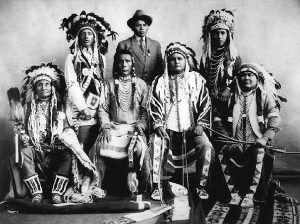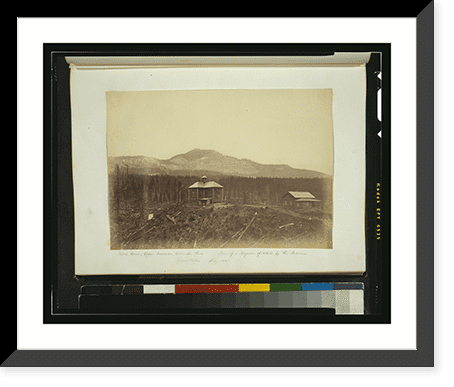
The Echoes in the Timber: When Legends Bleed into Reality in America’s Wilds
America, a land forged in the crucible of pioneering spirit and untamed wilderness, is a tapestry woven with countless legends. From the towering exploits of Paul Bunyan to the spectral sightings of the Mothman, these narratives serve as more than mere campfire tales; they are reflections of our deepest hopes, our most primal fears, and the enduring mystery of the land itself. They explain the inexplicable, rationalize the terrifying, and give voice to the unspoken anxieties that lurk just beyond the periphery of our understanding. Yet, some legends delve into a darker, more unsettling territory, blurring the lines between historical tragedy and supernatural horror, leaving an indelible mark on the landscape and the collective psyche. Among these, a chilling narrative has taken root in the Pacific Northwest, particularly around the rugged, mist-shrouded peaks of Washington’s Cascade Range: the legend of the Cascades Massacre.
The Pacific Northwest, with its ancient, towering forests, perpetually damp climate, and dramatic volcanic peaks, is fertile ground for such dark folklore. It’s a region where the natural world still asserts a powerful, sometimes overwhelming, presence. Here, the legendary Sasquatch is said to roam, a primal echo of the wild itself, and the Thunderbird, a creature of immense power and mystery, dominates indigenous mythologies. This environment, both awe-inspiring and foreboding, naturally fosters stories that speak to humanity’s vulnerability in the face of nature’s grandeur and its hidden terrors.
The Cascades Massacre, though its precise historical veracity remains shrouded in the mists of time and local reluctance to speak, exists as a potent legend, a shadowy chapter often recounted in hushed tones around flickering hearths in remote logging towns or whispered among hikers braving the deeper trails. The core of the tale centers around a small, isolated settlement – sometimes a logging camp, sometimes a prospecting outpost, sometimes even a nascent pioneer community – that vanished or was utterly decimated under inexplicable circumstances in the late 19th or early 20th century. The details vary, but the chilling outcome is always the same: a sudden, brutal end, leaving behind a scene of unspeakable horror and no clear, rational explanation.

"They say the silence was the worst part," recounts Elias Thorne, a fictional local historian and a character composite of many real-life purveyors of regional folklore. "Not the screams, for there were none, but the absolute, unnatural quiet that fell over the valley after that night. Like the mountain itself had swallowed every sound, every soul."
According to the most prevalent versions of the legend, the discovery was made by a lone trapper or a supply party. They would stumble upon the deserted settlement, cabins left open, meals half-eaten, tools abandoned – all signs of a community that had simply ceased to be, without a struggle, without a trace. In other, more gruesome accounts, the scene was one of carnage, but with no conventional culprits. No raiding party, no wild animals, no natural disaster seemed to fit the scale or the nature of the devastation. Bodies, if found, were often described as disfigured in ways that defied known predator attacks or human weaponry, hinting at something far more ancient and malevolent.
This ambiguity is the lifeblood of the legend. Was it a forgotten skirmish with a vengeful Native American tribe? A deranged hermit of the woods? A catastrophic, localized natural phenomenon that left no obvious geological scars? Or, as the whispers inevitably began, was it something else entirely – something from within the mountain, something of the deep, dark woods itself?
The legend of the Cascades Massacre draws power from its parallels with other American wilderness horrors. Consider the tale of the Roanoke Colony, where an entire settlement vanished without a trace, leaving behind only the enigmatic word "CROATOAN" carved into a tree. Or the numerous "ghost towns" scattered across the West, abandoned for economic reasons, yet often imbued with tales of lingering spirits and unspoken tragedies. The human mind yearns for explanation, and when rational answers fail, the supernatural steps in to fill the void.
In the case of the Cascades Massacre, the explanations often gravitate towards the primal. Some speculate it was a vengeful spirit, perhaps an ancient guardian of the land disturbed by human encroachment. Others whisper of a Sasquatch, not merely a shy ape-man, but a territorial and malevolent entity driven to violence. Yet another theory points to a more ethereal, almost cosmic horror – a rift in reality, a momentary tear that allowed something unimaginable to slip through from another dimension, only to recede, leaving behind only devastation and a chilling memory.
"The mountains here, they hold old secrets," Thorne would muse, gazing out at the distant peaks. "They’ve seen things, ancient things, long before our kind ever set foot here. And sometimes, when you push too far, when you dig too deep, those secrets push back."
This element of the unknown, of an ancient, brooding intelligence lurking in the primeval forest, resonates deeply with the American experience. For all our technological prowess, the vast, untamed corners of the continent still hold a profound mystery. Early settlers faced constant peril from the elements, from wild animals, and from the indigenous populations whose lands they encroached upon. These very real dangers fostered a collective consciousness where the wilderness was both a source of bounty and a terrifying, unpredictable force. Legends like the Cascades Massacre are modern echoes of these primordial fears, transposed onto a landscape that, despite all our maps and roads, remains fundamentally wild.
The story also serves as a cautionary tale. It’s a warning against hubris, against the belief that humanity can conquer all. The pioneers who ventured into the Cascades were brave, but often naive to the full extent of the challenges. The legend implies that there are forces older and more powerful than any human endeavor, forces that, when provoked, can erase a community as easily as a wave washes away a footprint in the sand. This speaks to a deeper American anxiety about our place in the natural order – are we masters, or merely transient guests?

The journalistic style demands a critical look at how such legends are perpetuated. Oral tradition is key, but so are the physical markers, however subtle. Perhaps a forgotten grave marker, a strangely stunted patch of forest, or a faint, almost imperceptible trail leading to nowhere specific, serves as a physical anchor for the story. Modern media, too, plays a role, with online forums, podcasts, and local documentaries often revisiting such tales, adding new layers of speculation and sometimes even "evidence," further cementing their place in the collective imagination. The line between documented history and compelling folklore becomes increasingly blurred.
Ultimately, the legend of the Cascades Massacre, whether rooted in a single historical event or a composite of many fears and disappearances, transcends a simple spooky story. It embodies a uniquely American encounter with the unknown: the vastness of the land, the isolation of its wild places, and the human compulsion to explain the inexplicable. It’s a testament to the fact that even in an age of satellite imagery and instant communication, there are still corners of this continent where the old fears hold sway, where the whispers of a long-lost tragedy can still send a shiver down the spine, reminding us that some legends, however dark, are destined to live on, echoing through the timber and the mists, forever woven into the fabric of America’s wild heart. They remind us that the greatest legends are not just about what happened, but about what could have happened, and what, in the deepest recesses of our imagination, might still be lurking, just beyond the edge of the firelight.


